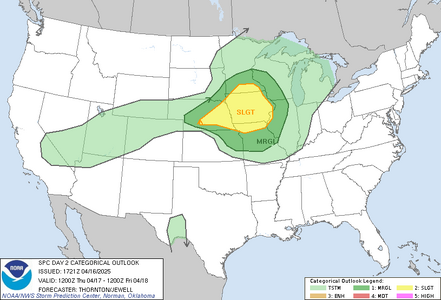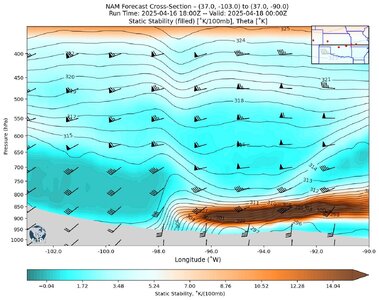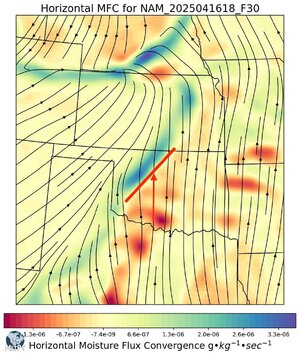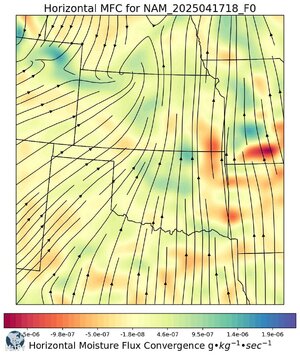gdlewen
EF4
The SLGT risk target area in the Day 2 SPC Convective Outlook is out of reach for me tomorrow, but I would be interested in seeing a discussion by those who will be chasing tomorrow.
For my part, I am eyeing the dryline in OK (no surprise there), and a cap which seems to have an absolutely 100% chance of holding. The inversion at the base of the EML looks impenetrable:
And the EML base has looked this strong since the NAM came into range. The only reason I have any interest at all is
Anyway for tomorrow’s forecast, the convergence looks like this
So we’ll see. Except for underrunning, I don't see a source of lift that can break or beat this cap. I’ll be keeping an eye on things tomorrow, of course, to see if the configuration sketched out above is validated. I expect I'll be staying home, though, and this has just been another learning exercise.
Lanicci, J. M., and T. T. Warner, 1991: A Synoptic Climatology of the Elevated Mixed-Layer Inversion over the Southern Great Plains in Spring. Part I: Structure, Dynamics, and Seasonal Evolution. Wea. Forecasting, 6, 181–197
For my part, I am eyeing the dryline in OK (no surprise there), and a cap which seems to have an absolutely 100% chance of holding. The inversion at the base of the EML looks impenetrable:
NAM Forecast Cross Section of Static Stability (SS) and winds along Latitude 37˚N, valid 4/18/2025 at 00Z. (See Lanicci and Warner, 1991 for the definition of static stability used here.) A mean static stability of ≤ 4.5˚/100mb is used by Lanicci, et. al. to discriminate EML from non-EML (elevated stable air masses) so the (white) center of the diverging colorbar is adjusted to a value of SS=4.5˚/100mb. |
And the EML base has looked this strong since the NAM came into range. The only reason I have any interest at all is
- It's a dryline
- The cap is weaker near the dryline itself, and
- The possibility of underrunning due to the strength of the convergence of the winds across the dryline
Anyway for tomorrow’s forecast, the convergence looks like this
NAM Forecast Moisture Flux Convergence valid 4/18/2025 00Z. The red bar and red arrow denote the approximate position of the dryline (based on the surface convergence pattern) and incident wind, respectively. |
So we’ll see. Except for underrunning, I don't see a source of lift that can break or beat this cap. I’ll be keeping an eye on things tomorrow, of course, to see if the configuration sketched out above is validated. I expect I'll be staying home, though, and this has just been another learning exercise.
Lanicci, J. M., and T. T. Warner, 1991: A Synoptic Climatology of the Elevated Mixed-Layer Inversion over the Southern Great Plains in Spring. Part I: Structure, Dynamics, and Seasonal Evolution. Wea. Forecasting, 6, 181–197




